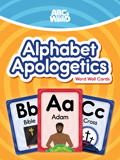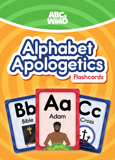
Encouraging Independent Learning
Getting your child to the point that he can and wants to learn on his own is the goal. How do you get there? Independent learning is going to look different for each family and even for each child. As a homeschool kid myself with younger siblings, I can attest to the uniqueness of an individual’s learning needs. But every student can be equipped with opportunities for independent learning. Don’t feel like each student’s journey has to match someone else’s. One of the many beautiful things about homeschooling is the built-in freedom for students to take responsibility for learning at their own pace while exploring their giftings and interests.
In the elementary years, you are laying the foundation for independent learning. Typically, middle and high school are when students can be expected to learn on their own. Here are seven tips to encourage you and them on this journey.
-
Give them ownership of their space and supplies.
I remember how excited my siblings and I were to pick out folders with our favorite characters and animals, colorful pencils and pens, and stickers for our laptops and notebooks. Letting students personalize their space and supplies can provide motivation and excitement for learning. While I had my regular workspace, I also would work at the kitchen table, in my room, on the couch, etc. Having the freedom to work wherever helped me find what I needed to focus and stay on task.
-
Involve them in planning.
Students will be more motivated to learn independently if they have some say in what they are learning. Ask them what they are interested in studying or learning more about. Let them make suggestions. Integrate their interests into their education. Consider giving them the task of researching curriculum options, even giving them a budget or certain specifications for their or your family’s needs.
-
Choose curricula that works with their learning style.
Children are fearfully and wonderfully made with different learning styles and preferences. Equip your students with a curriculum that fits their learning style. When a friend of mine found that her youngest daughter was unlike her two visual-learning sisters, she switched to audio books. When I was in high school, I switched from a computer-based curriculum to physical workbooks because I wanted to be able to highlight and annotate.
-
Communicate realistic expectations.
Whether through an online spreadsheet, a binder of assignment sheets, or a daily checklist on a wipe-off board, find a way to communicate realistic expectations to your students. After making your plan for the day, ask your students if they think they can accomplish what is expected of them. You want the pace to challenge but not overwhelm them. Give them options on how they are going to complete their work. Perhaps they want to complete all math assignments for the week at once, or maybe they need a little longer to research a project. We all benefit from seeing clearly what needs to be accomplished and know that it is within our capability to get it done.
-
Let them fail and try again.
When they are struggling with an assignment or project, resist the urge to immediately jump in to help them. Let them work through it. In life, we must rise to challenges. Allowing them room to try, fail, and try again develops decision-making and problem-solving skills. Keep the doors of communication open so they are not afraid to come to you when they need assistance.
-
Show them the value of learning.
While you can show that most subjects are applicable and important to daily life, there are some where it is not immediately apparent. We all want to know when we are going to use algebra in our daily life. However, regardless of the subject, you can teach your student that there is value in learning something that is difficult. Explain that learning develops problem-solving skills, perseverance, a strong work ethic, etc. Show the value of knowing how to learn. Model your own love of learning with your interests and hobbies. Give examples of all the things they can discover and enjoy through learning.
-
Give them time to rest.
Everyone needs brain breaks, especially students. Build into your schedule times of rest for them to look forward to and work toward.
As you build the foundation toward independent learning, consider the following resources.
-
Alphabet Apologetics Word Wall Cards: 26 alphabet cards featuring each letter of the alphabet and a corresponding biblical word. A small 4–5-page guide is also included, which lists the corresponding Scripture and discussion for each letter (mirroring the alphabet cards) and some suggested activities to do with the alphabet cards.
-
Alphabet Apologetics Flashcards: 26 alphabet flashcards featuring each letter of the alphabet and a corresponding biblical word on the front and scriptural, historical, and apologetic content about the word on the back.

Answers in Genesis is an apologetics ministry, dedicated to helping Christians defend their faith and proclaim the good news of Jesus Christ.
- Customer Service 800.778.3390
- Available Monday–Friday | 9 AM–5 PM ET
- © 2025 Answers in Genesis


